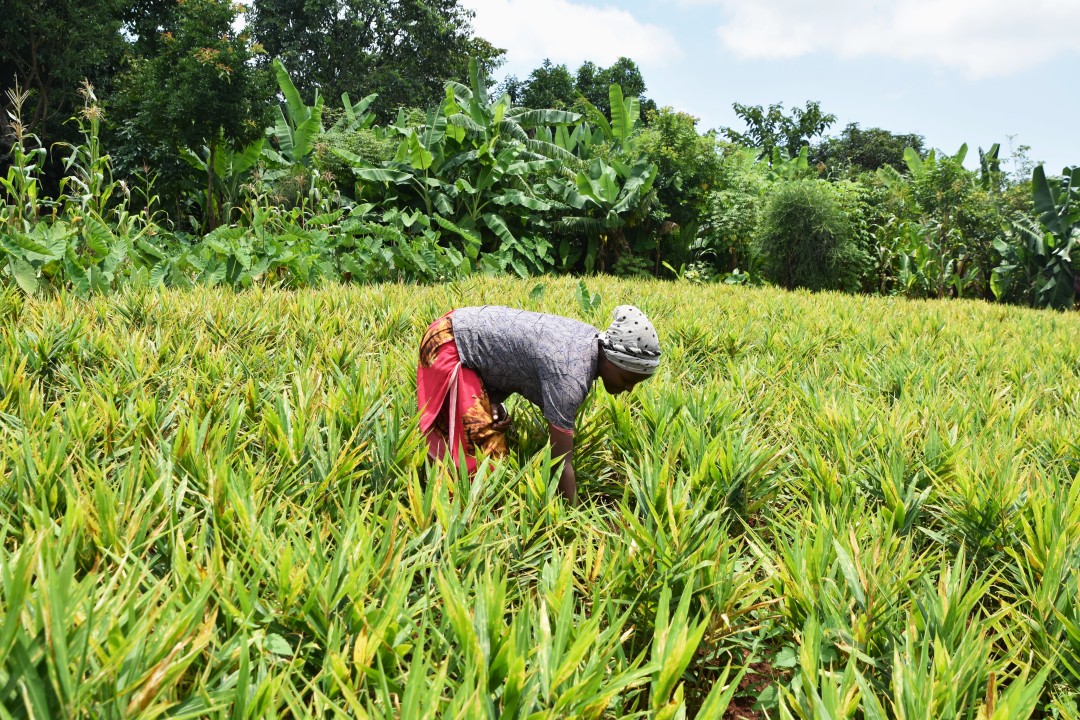After several years of halted production, ginger cultivation has returned to southern Ethiopia, bringing hope to farmers and the local economy. The region has a long history of producing high-quality ginger, but disease pressure and unfavorable weather conditions have hampered production in recent years. However, with the support of research and partners, farmers in the region are once again able to cultivate ginger and reap the benefits of this lucrative crop. The resurgence of ginger production in southern Ethiopia is a significant development for the country’s economy. The region has a favorable climate for ginger cultivation, with fertile soil and ample rainfall. This makes it an ideal location for growing high-quality ginger that can compete in the global market.

The disease was mainly due to bacterial wilt, as concluded by a team of researchers from the national research system during their 2012 survey report. As a result, the SNNPR Bureau of Agriculture banned the production of ginger in the region for a specific period until the expected disease pressure was reduced. During this period, farmers continued to produce ginger, but the harvest was subpar.
Boloso Bombe woreda is a region in Ethiopia that was once renowned for its ginger production. The local farmers had developed a thriving agricultural system that contributed significantly to the food security of the woreda. However, in recent years, the woreda has faced a severe crisis due to the incidence of ginger disease, which devastated the crop and left most households food aid-dependent. The rapid food system appraisal facilitated by RAISE-FS has shed light on the challenges faced by the region and the impact of the ginger disease on the local economy.
The participants of the appraisal highlighted the significance of ginger production in the woreda and how it was a source of livelihood for many families. The loss of the crop has had a ripple effect on the entire community, leading to a food crisis that has left many households struggling to make ends meet. The situation in Boloso Bombe woreda is not unique. Many areas in the region facing similar challenges. These challenges have a profound impact on the food security of communities, leading to hunger, malnutrition, and poverty.
Then, RAISE-FS organized a stakeholder consultation workshop on the research achievements and possible recommendations to tackle the menace. The workshop brought together key resources persons from Addis Ababa University, EIAR, SARI, and the private sector. The importance of the crop and the complexity of the challenge were taken into consideration during the workshop. Participants recognized the need for a multi-pronged approach to tackle bacterial wilt disease.
This approach would involve both preventive and curative measures to minimize the risk of infection and manage the disease when it occurs. The workshop suggested efforts to concentrate on identifying appropriate planting times and applying integrated disease management options. Additionally, using irrigation to escape bacterial wilt disease pressure in the humid summer was recommended.
Areka ARC, as the regional center of excellence for ginger research, collaborated with RAISE-FS to identify a quick solution for the problem. The center conducted experiments to explore the best solution for the treatment of the ginger disease complex. The experiment focused on validating integrated management options for the ginger wilt disease complex. The experiment identified that application of the recommended fungicide at the recommended rate just after the first sign of the disease gave better results. A field visit was organized to evaluate the performance of the experiment, and the change observed was very impressive. Farmers who followed the recommended treatment were able to harvest good-quality ginger produce for the first time in about eight years. This is a significant achievement and a major boost for the ginger industry in the region.

In summary, the promising result observed is good news for farmers in Southern Ethiopia, as it will boost food security and provide income for many households. It demonstrates that with the right research and collaboration, solutions can be found to even the most complex problems. This is a major boost for farmers who rely on ginger production for their livelihoods, and it will help to ensure a stable and sustainable supply of ginger in the region. The research effort should continue until a sustainable solution is in place to ensure that farmers can produce ginger sustainably without any threat of disease.
(Here is the link for ginger working paper)

